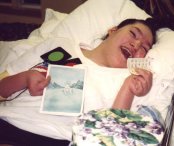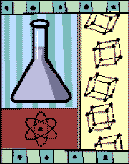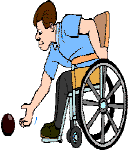The Cerebral Palsy Network
- Cerebral Palsy
- Hippo therapy
- Pediatric Stroke
- School Daze
- HBOT
- SDR
- Spasticity Management
- Cephalic Disorders
- CP & Aging
- BOTOX
Around CPN
Resource
Center
HYPERBARIC OXYGEN
THERAPY FOR CEREBRAL PALSY
AND STATIC ENCEPHALOPATHY OF CHILDHOOD
Paul G. Harch, M.D., Keith Van Meter, M.D., Paul Staab, M.D., Sheldon
Gottlieb, Ph.D.,
Baromedical Research Institute, New Orleans, LA and Family Physicians
Center,
Marrero, LA.
Introduction:
From 1992 to 1999 26 children with CP or static Encephalopathy
were evaluated under a unique neurorehabilitation program of the
Baroinedical Research Institute (BRI)
of New Orleans to see if the sequence of baseline SPECT brain scan, single
HBOT at 1.5ATA, and repeat scan could identify potentially recoverable
brain tissue and predict neurological improvement after repetitive HBOT.
Methods:
26 Children ages I I mos. To I I yrs. Avg. 2. To 4
yrs., were evaluated with the Neubauer/Gottlieb technique of
scan-dive-scan using Sechrist 2500 monoplace hyperbaric chambers and a
Picker Prism 3000 triple head SPECT scanner. HMPAO or ECD was injected
prior to conscious sedation with short-acting sedatives. Raw scan data was
analyzed by computer assisted method. Children underwent physical exams,
videotaping, and the parents were interviewed pre and post treatment. HBOT
was administered at 1.5 ATA/90 mins in the first 4 patients and 1.5
AT.,k/60 mins in the remainder, q.d or b.i.d. for 80 HBOT's with at least
a 3 week break at 40 HBOT'S.
Results:
18 children completed the entire treatment and
evaluations. 8 are still under treatment. Computer analysis of SPECT is in
process. Generally, scan showed a diffuse heterogenous appearance that
smoothed after one and after a series of HBOT's and was consistent with
improvement in one or more of 7 functions: awareness, tone, motor (fine
and gross),
communication, balance/gait, overall cognition, and swallowing. Two of the
18 showed minimal or no neurological change. Complications include mild
over-
sedation in 4 of 70 conscious sedations for scanning.
Conclusions:
HBOT was well tolerated in children with CP or
static Encephalopathy. A single HBOT caused qualitative improvements in
SPECT brain imaging in most children which predicted clinical and final
SPECT improvement with repetitive HBOT. Placebo effects were non-existent
due to lack of cognition.
A special thankyou to the countless Drs and children whom have made this research possible. All information contained within these pages are the sole property of the Dr.s and experts that have spent the countless hours researching for OUR CHILDREN. Please read each page of content and please contact your local congressmen and appropriate government officials today. Thankyou.
This site designed & maintained by Mystic Dawn Web Creations. The Cerebral Palsy Networkę1997/2003. All graphics are the exclusive property of CPN, unless otherwise indicated. Contact CPN at Cerebral Palsy Network for further information.
Last updated 03/24/03

Amanda the reason CPN was
started
CPN
Reunion 2003

CP
Research
What's happening Today with
Cerebral Palsy

Special
Olympics
What's happening with
Special Olympics in 2003

CP
& Education
What's happening with
Special Need and Education in 2003